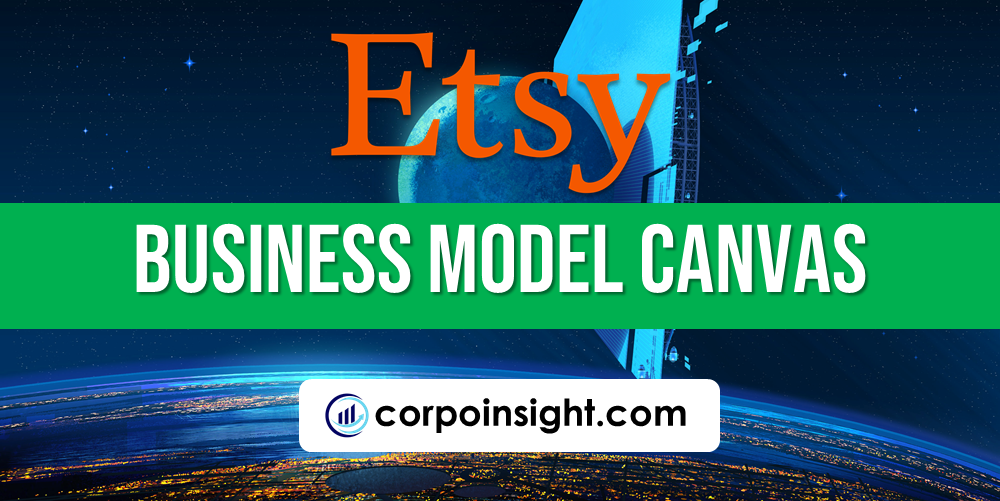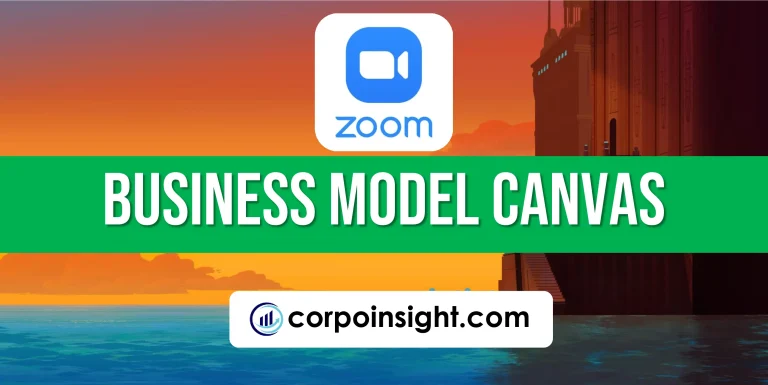Etsy Business Model Canvas 2024
Bringing handcrafted and vintage creativity to life through Esty, it is an online marketplace connecting individual makers with buyers seeking unique items. We will get to learn Etsy’s customer segments, value proposition, revenue streams, channels, customer relationships, key activities, key resources, key partners, and cost structure.
Interesting fact!
Etsy employees have an annual “Skill Swap” day where they teach and learn creative skills from each other, such as knitting, coding, or sculpture.
Etsy Competitors
Amazon Handmade | eBay | ArtFire | Dawanda | Storenvy | Shopify | Square | Bonanza | BigCartel | iCraft
Customer Segments – Etsy Business Model Canvas

Sellers: Etsy attracts independent creators, artisans, and small businesses selling handmade, custom, or vintage items across a range of categories like jewelry, clothing, home decor, furniture, and more. As a result, the company had over 5.3 million active sellers globally in 2023.
Buyers: Etsy buyers are consumers seeking unique, creative, and handcrafted items not easily found at mainstream retailers. Over 90 million active buyers used Etsy in 2023 to find special gifts, clothing, homewares, wedding items, and more.
Wholesale buyers: Etsy provides a wholesale sales channel enabling some sellers to connect with bulk buyers like boutiques, retailers, or event planners. These buyers are typically small-medium retailers seeking unique, handcrafted items for their shops. Sellers can use coupons, private listings, and shop announcements to target these wholesale buyers.
Manufacturing partners: Etsy offers a marketplace for sellers to connect with production partners who can create their designed goods, allowing sellers to partner with Etsy Manufacturing to outsource production while managing branding and sales on Etsy.
Value Proposition – Etsy Business Model Canvas

Unique selection: Etsy offers a vast range of handmade, vintage, and creative products that buyers cannot find anywhere else, unlike mass marketplaces.
Creative small businesses: Etsy enables millions of artists, creators, makers, and curators of specialty goods to start their businesses by providing a digital storefront and marketplace reach.
Customizable or personalized: Many Etsy sellers offer personalized or customized products tailored to buyers’ specifications, like monogrammed items, customized clothing, or unique crafts.
Community and human connection: Etsy fosters a sense of community between buyers, sellers, and the Etsy brand by emphasizing the human creativity behind sellers’ shops.
Revenue Streams – Etsy Business Model Canvas

Marketplace fees from sellers: Etsy charges sellers both listing fees per item posted and transaction fees per order, which account for the majority of revenue. These fees range from 5-20% of order value.
Shipping labels and payment processing: Etsy generates revenue by offering shipping labels and processing payments on purchases, charging both a flat transaction fee and a percentage of order value.
Advertising: Sellers can pay for promoted listings and other on-site advertisements to increase visibility, generating ad revenue for Etsy.
Etsy Payments fee: Etsy charges a payment processing fee when buyers use the Etsy Payments service for purchases instead of direct credit card payment.
Other fees: Subscription fees for promoted listing services, purchase of instructor lessons on the Etsy website, and fees from Etsy Manufacturing partners.
Channels – Etsy Business Model Canvas
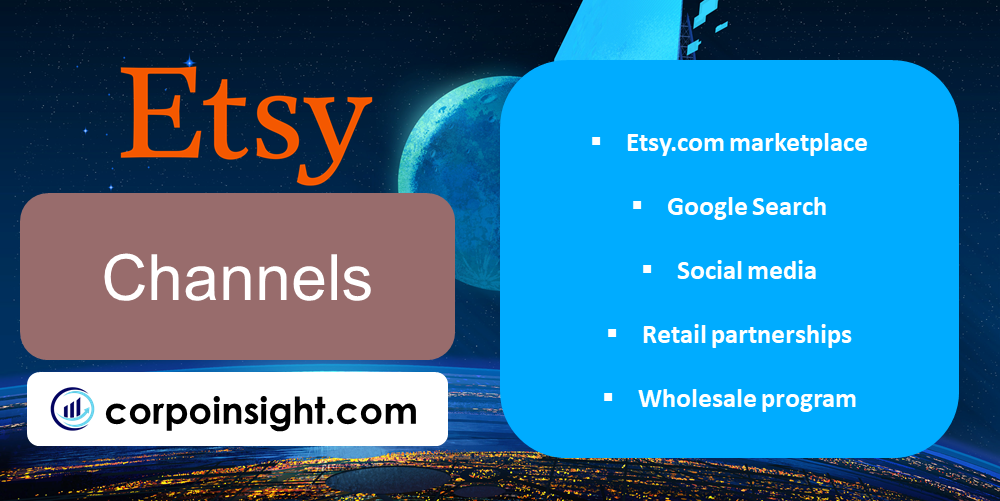
Etsy.com marketplace: The core Etsy platform and mobile app serve as the primary channel connecting Etsy buyers and sellers in a seamless online marketplace.
Google Search: Etsy invested significantly in SEO and Google Ads to ensure Etsy items appear prominently in search results when users search for handmade, vintage, or specialty items online.
Social media: Etsy relies heavily on Facebook and Instagram advertising to acquire new buyers by promoting unique new products and trends. Sellers also market through their own social channels.
Retail partnerships: Etsy partners with large national retailers like Nordstrom to showcase Etsy products in pop-up shops, increasing brand exposure.
Wholesale program: The Etsy Wholesale program allows boutiques, galleries, and other retailers to purchase Etsy goods in bulk directly from sellers and resell them.
Customer Relationships – Etsy Business Model Canvas
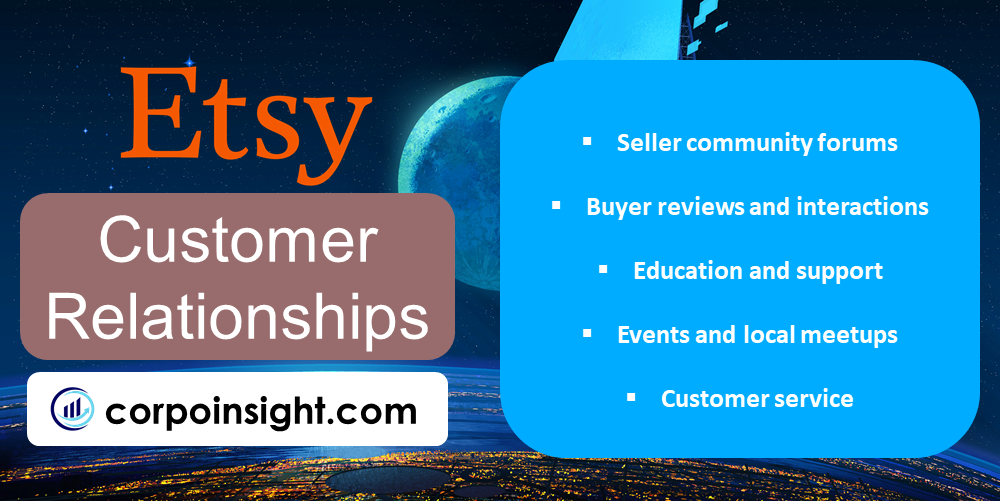
Seller community forums: Etsy fosters an online seller community through forums where sellers can interact, exchange tips, and build relationships.
Buyer reviews and interactions: Buyers can interact with sellers directly and leave product reviews to establish relationships, build trust, and provide feedback.
Education and support: Etsy offers extensive guides, resources, and workshops to educate sellers on e-commerce and help them grow their shops by building skills.
Events and local meetups: Etsy organizes special events and meetups in cities worldwide to enable in-person interactions between sellers, buyers, and Etsy employees.
Customer service: Etsy provides extensive 24/7 customer service resources for buyers and sellers, including help centers, chat support, messaging, and phone contact.
Key Activities – Etsy Business Model Canvas

Operating online marketplace: Etsy builds and manages the technology, platform, and infrastructure for the online Etsy marketplace and mobile apps.
Seller Services: Etsy provides services to attract, retain, and support sellers, including account management, education resources, tools for managing shops, payment processing, and customer support.
Marketing: Etsy markets to potential new buyers through search engine optimization, digital ads, social media, influencer campaigns, retail partnerships, and affiliate programs.
Product development: Etsy continually enhances platform features by adding new capabilities for sellers, like analytics, marketing tools, targeted promotions, and emerging technologies like AR/VR.
Trust and safety: Etsy works to maintain the integrity of its marketplace by policies for product quality, fighting fraud and abuse, purchase protection programs, and robust security measures.
Key Resources – Etsy Business Model Canvas

E-commerce platform and data: Etsy’s core marketplace technology, user behavioural data, and machine learning capabilities are key resources for operations.
Sellers and buyers: The 90+ million Etsy buyers and over 5 million sellers are the fundamental value creators for the business. Their activity fuels the marketplace ecosystem.
Employees: Etsy’s engineers, product designers, marketing specialists, customer support reps, and business operations teams provide critical expertise for growth.
Brand reputation: Etsy’s brand image centred on unique handmade and creative goods is a key asset that attracts artisans and buyers.
Capital: The capital Etsy raises as a public company is deployed to fund technology development, marketing, strategic partnerships, and hiring top talent.
Key Partners – Etsy Business Model Canvas

Payment processors: Etsy partners with payment processors like Adyen to enable secure transaction processing on its platform.
Shipping providers: Partner shipping carriers like USPS, DHL, and FedEx enable affordable shipping options and labels for Etsy sellers.
Ad networks: Etsy relies on ad partnerships with Google, Facebook, Instagram, Pinterest, and others to acquire new buyers through targeted ad campaigns.
Manufacturing partners: For its Etsy Manufacturing service, Etsy partners with third-party merchants to produce goods for sellers.
Retailers: Etsy partners with major retail chains like Nordstrom for special in-store and online Etsy product showcases as pop-up shops.
Cost Structure – Etsy Business Model Canvas
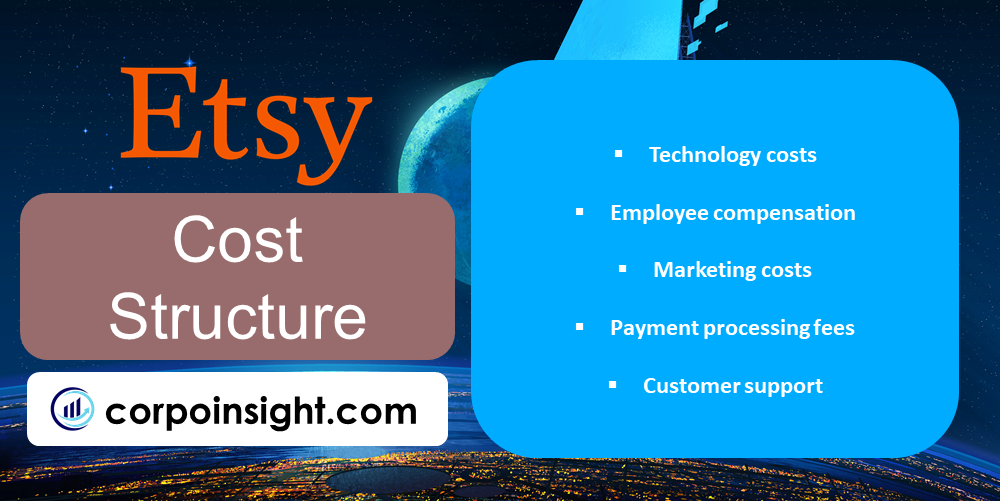
Technology Costs: Significant investments in engineering, product development, cloud servers, and security to operate the marketplace.
Employee compensation: Salaries, benefits, and equity compensation are paid to recruit and retain a large workforce, especially in engineering and product roles.
Marketing costs: High costs for online advertising, search optimization, brand partnerships, and promotions to attract buyers.
Payment processing fees: Interchange and transaction fees are paid to payment processors and banks for each Etsy purchase.
Customer support: Operating global customer support centers for buyers and sellers requires ongoing investment
Summary of Etsy Business Model Canvas

Conclusion on Etsy Business Model Canvas
Etsy’s marketplace business model succeeds by servicing a community of creative entrepreneurs and unique item seekers, enabled by scalable technology, data-driven marketing, and comprehensive support driving complex platform economics.

This is Ahsanul Haque, someone very passionate about digital marketing, SEO, and Data Analytics and founder of the Analytics Empire and currently pursuing my major in marketing at Bangladesh University of Professionals.

